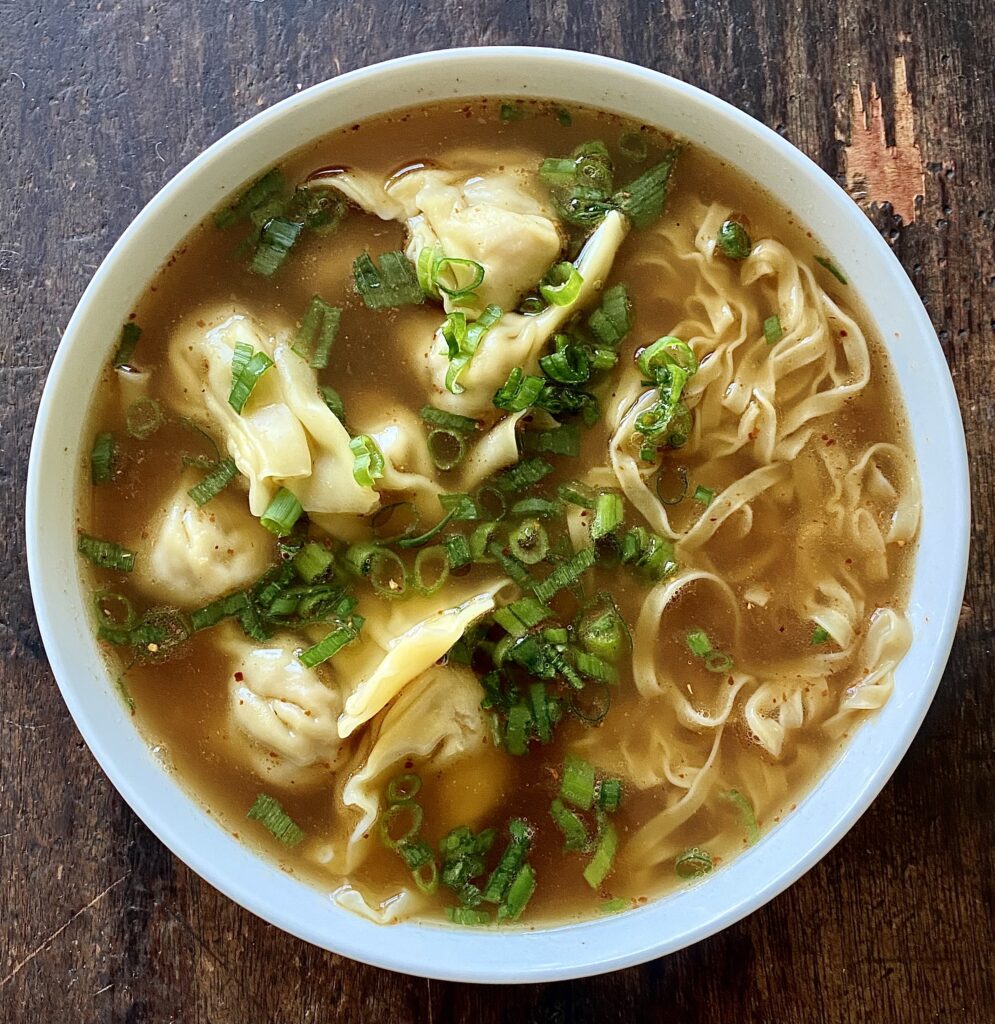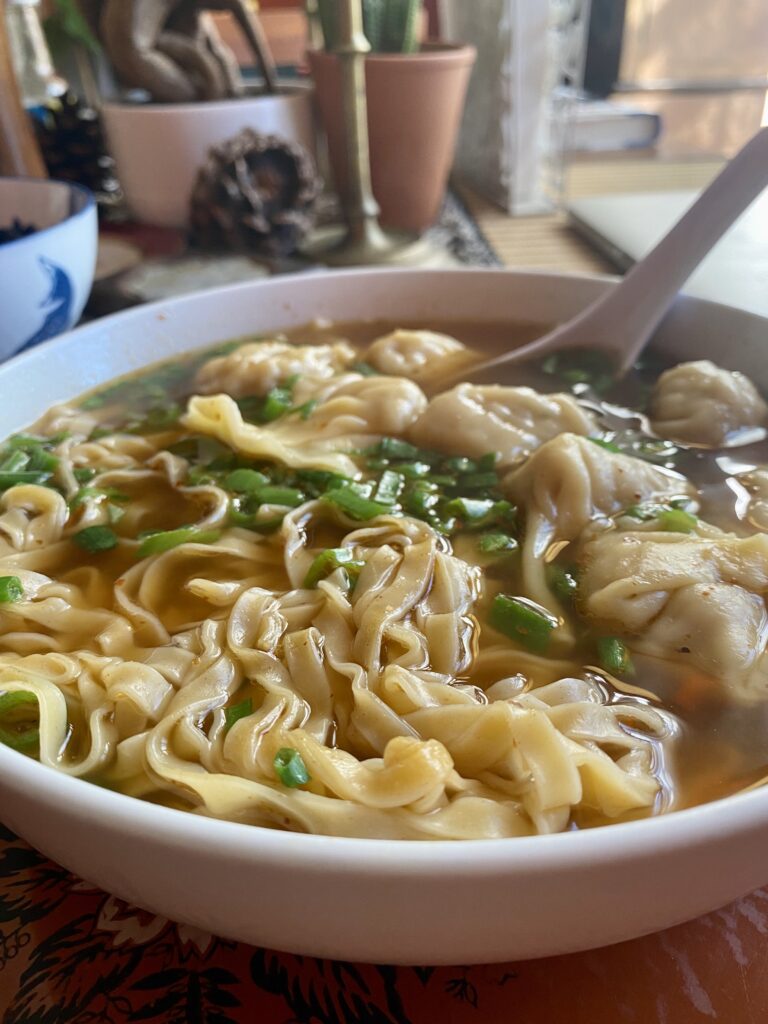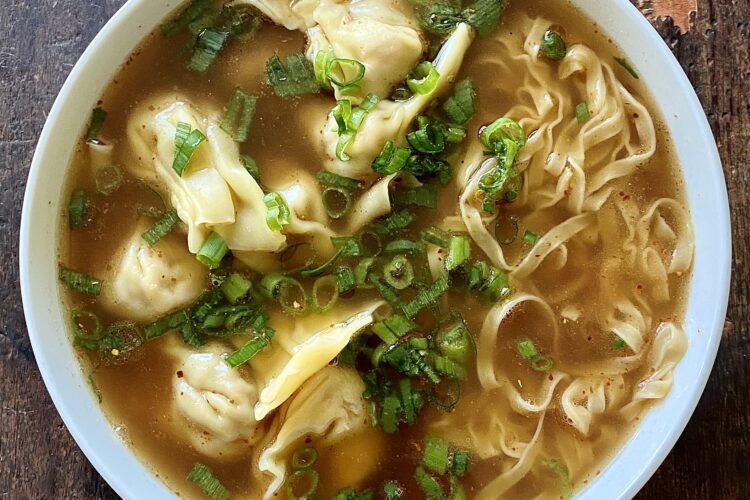
I’ve had heard on more than one occasion that wonton, as the characters 云吞 would suggest, means “swallowing cloud” and was named so for its delicate, slippery texture and ethereal lightness. This is, however, a mistranslation from Cantonese to Mandarin. Nevertheless, it’s extremely common. Even my wonton wrapper package reads “云吞”.
The correct characters, which are essentially single-use, are 馄饨,/餛飩 and most sources credit this as a later orthography that is derived from 混沌, which wiktionary defines as “chaos and confusion of the primordial world.” And yet even a Google search for “混沌” still yielded pictures of food with 混沌 in the caption. Where exactly somebody thought that wontons resemble chaos is still a mystery, but now my lovely little image of swallowing clouds has been exchanged for a tempestuous, primordial soup.
Maybe it has to do with the minced filling.
Or maybe it has to do with this creature…

After examining a few recipes, I found that most enthusiasts of this wonton soup (mainly Souped Up Recipes and Chinese Food Demystified) insist on toasted, dried and powdered flounder (大地魚) for an authentic Cantonese flavor. Despite Fubonn having a good selection of dried fish, I couldn’t find this one and I couldn’t determine if there was one that would have been a suitable substitute. I did, however, remember that there is a toasted dried fish powder in the Thai cuisine, which they did have in stock.

I more or less ended up following the CMD recipe, but I did not make my own wrappers or noodles because I do not have that kind of leisure time. The result was awesome. It might be the best thing I’ve made this year. I can’t say it’s authentically Cantonese as the Thai powder has a good deal of chile, but I was damn proud of how well it came out. Umami was off the charts.

